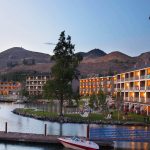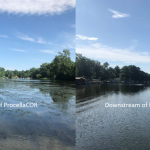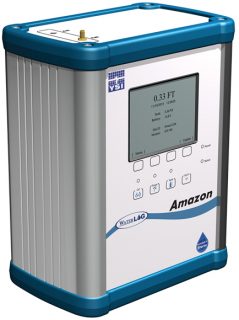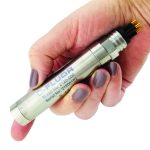A career and a legacy: Robin Matthews
by Peg Wendling, Department of Public Works, City of Bellingham
f the ultimate finale to a career in limnology is to swim off into the sunset, then the wake left behind by Dr. Robin Matthews will be a sight to behold. At the end of this year, Robin leaves her post as the Director of Western Washington University’s Institute for Watershed Studies. Of her many accomplishments, one that will leave an enduring mark started with her taking a sporadic lake monitoring program on Lake Whatcom, Bellingham’s drinking water source, and turning it into a comprehensive body of work. This research has contributed greatly to lake protection efforts–a legacy that will benefit Bellingham indefinitely.
Lakes are for everyone, but especially Lake Chelan this October!
by Sally Abella
This year’s WALPA conference will be held October 30th through November 1st 2019 at Campbell’s Resort, located at the south end of Lake Chelan. The resort has been a very popular destination for the conference in the past, and we are looking forward to seeing many old and new friends there.
ProcellaCOR is a new tool for invasive aquatic plant management in the Pacific Northwest
FROM Aquatechnex, GOLD SPONSOR OF 2018 WALPA CONFERENCE
Eurasian water milfoil has long been the major invasive aquatic weed threatening the Northwest’s lakes and river systems. In recent years, hybrid strains of milfoil are starting to appear, and yellow floating heart is an expanding problem. To a lesser degree, parrotfeather and water primrose are problems locally in the region. While there are a number of technologies available to combat these species, water resource managers have needed a tool that works in high water-exchange environments and that addresses hybrid strains of milfoil.
Technical tips: optimizing field performance of water level bubblers
FROM YSI, GOLD SPONSOR OF 2018 WALPA CONFERENCE
by Dr. Stephanie A. Smith, YSI Product Segment Manager
The environmental impacts of climate change are apparent, from flood to drought. However, climate change can also impact our equipment choices for measuring water level, as more drastic swings in an environmental system become the new normal. When climate-driven cycles of flood and drought are monitored within a single system, popular technologies like radar may perform sub-optimally at very low water levels that expose interfering features along river banks or beds. Pressure transducers often will require recalibration if left to dry out. A bubbler, however, keeps working through those dry cycles, delivering reliable data even after a creek or river bed runs dry and then fills again.
New probes have lower power needs, improving usability for long-term monitoring
FROM Turner Designs, GOLD SPONSOR OF 2018 WALPA CONFERENCE
Water quality monitoring instruments used for long-term deployments or integrated with platforms such as moorings, profilers, or monitoring stations usually need to meet several requirements, the most important one being low power consumption. Low power consumption is critical because these platforms typically use limited-power sources such as batteries, solar or wind to power multiple instruments. Therefore, reducing the power demands of these sensors greatly increases their usability and adds robustness to the data sets collected.














